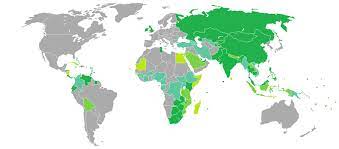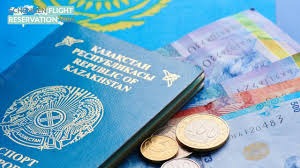
Saudi Arabia has long been a destination of significant interest for many people around the world. Whether it is for religious pilgrimage, business opportunities, or tourism, the Kingdom attracts a diverse range of visitors each year. For Malaysian citizens, the process of obtaining a Saudi visa can be a crucial step in making their travel plans a reality. This article aims to provide comprehensive information on the Saudi visa for Malaysian citizens, highlighting the types of visas available, the necessary requirements, and practical tips to ensure a smooth application process.
Types of Saudi Visas
Saudi Arabia offers several types of visas, each tailored to the specific purpose of the visit. Understanding the different categories can help Malaysian citizens choose the most appropriate visa for their needs. Here are the main types of Saudi visas available:
- Hajj and Umrah Visas: These are religious visas specifically for Muslims intending to perform Hajj or Umrah. Hajj visas are only issued during the Hajj season, whereas Umrah visas are available year-round except during the Hajj season and a few weeks before it.
- Tourist Visas: Saudi Arabia has recently opened up to tourism, offering e-visas and visas on arrival to citizens of many countries, including Malaysia. This type of visa is suitable for those who wish to explore the cultural, historical, and natural attractions of the Kingdom.
- Business Visas: For Malaysian citizens traveling to Saudi Arabia for business purposes, such as attending meetings, conferences, or exploring business opportunities, a business visa is required. This visa usually requires an invitation from a Saudi business entity.
- Work Visas: These visas are for Malaysians who have secured employment in Saudi Arabia. The process for obtaining a work visa involves several steps, including securing a job offer, getting the necessary approvals from Saudi authorities, and undergoing a medical examination.
- Student Visas: Malaysian students who wish to pursue education in Saudi Arabia need a student visa. This visa requires admission to a recognized educational institution in Saudi Arabia and sponsorship from the institution.
- Family Visit Visas: For those who have family members residing in Saudi Arabia, a family visit visa can be obtained. This visa allows Malaysians to visit their relatives for a specified period.
Requirements for Saudi Visa Application
The requirements for a Saudi visa can vary depending on the type of visa being applied for. However, some general requirements apply to most visa categories. Here is a detailed overview of the common requirements:
- Valid Passport: The passport must be valid for at least six months from the date of application and have at least two blank pages.
- Visa Application Form: The application form must be completed accurately and signed by the applicant. This can often be done online for e-visas.
- Photographs: Recent passport-sized photographs are required. The specific requirements regarding size and background color can vary, so it is important to check the guidelines provided by the Saudi embassy or consulate.
- Proof of Travel Arrangements: This includes flight itineraries and accommodation bookings. For religious visas, additional documents such as proof of Hajj or Umrah packages may be required.
- Supporting Documents: Depending on the type of visa, supporting documents may include a letter of invitation, proof of employment, educational certificates, or financial statements.
- Medical Examination: For work visas and long-term stays, a medical examination may be required to ensure the applicant is in good health and free from contagious diseases.
- Visa Fee: Payment of the visa fee is required, and the amount can vary depending on the type of visa and the processing time selected.
Application Process
The process of applying for a Saudi visa can be broken down into several steps. Here’s a step-by-step guide to help Malaysian citizens navigate the application process: SAUDI VISA ONLINE HELPDESK
- Determine the Type of Visa Needed
Before starting the application process, it is essential to determine the type of visa that best suits the purpose of the visit. Each visa type has specific requirements and conditions, so it is crucial to choose the correct one.
- Gather Required Documents
Once the visa type is determined, gather all the required documents. Ensure that all documents are up-to-date and meet the specifications outlined by the Saudi authorities. This includes obtaining any necessary letters of invitation or sponsorship.
- Complete the Visa Application Form
The visa application form can usually be completed online through the official Saudi visa portal or at the Saudi embassy or consulate. Fill in all the required information accurately and double-check for any errors before submission.
- Submit the Application
Submit the completed application form along with the required documents to the designated Saudi visa processing center, embassy, or consulate. For e-visas, the submission process is done online.
- Pay the Visa Fee
Pay the required visa fee. This can typically be done online using a credit card or at the visa processing center. Keep a receipt of the payment for future reference.
- Attend an Interview (if required)
For certain visa types, an interview may be required. If so, attend the interview at the scheduled time and be prepared to answer questions about the purpose of the visit and provide any additional documents if requested.
- Wait for Visa Processing
After submitting the application and attending the interview (if required), wait for the visa to be processed. Processing times can vary depending on the type of visa and the current workload of the Saudi visa authorities.
- Receive the Visa
Once the visa is approved, it will be affixed to the passport. For e-visas, the approved visa will be sent via email. Ensure that all the details on the visa are correct before traveling to Saudi Arabia.
Practical Tips for a Smooth Application Process
Navigating the visa application process can sometimes be challenging. Here are some practical tips to help ensure a smooth and successful application:
- Start Early: Begin the application process well in advance of the planned travel date. This allows ample time to gather all necessary documents, complete the application form, and address any potential issues that may arise.
- Check Requirements Carefully: Different visa types have specific requirements. Carefully review the guidelines provided by the Saudi embassy or consulate to ensure all documents meet the necessary criteria.
- Seek Assistance if Needed: If unsure about any part of the application process, seek assistance from a visa service agency or the Saudi embassy. They can provide valuable guidance and help avoid common mistakes.
- Keep Copies of All Documents: Make copies of all submitted documents, including the visa application form and payment receipt. These can be useful in case of any discrepancies or issues during the processing.
- Monitor Application Status: For online applications, monitor the status of the application regularly. This helps stay informed about any updates or additional requirements from the visa authorities.
- Prepare for the Interview: If an interview is required, prepare by reviewing the application details and being ready to explain the purpose of the visit. Bring all necessary documents to the interview.
Conclusion
Obtaining a Saudi visa for Malaysian citizens involves several steps, but with careful preparation and attention to detail, the process can be straightforward. Understanding the different types of visas available, gathering the required documents, and following the application process diligently are key to securing a visa successfully. By starting early and seeking assistance when needed, Malaysian citizens can look forward to a seamless experience in obtaining their Saudi visa and embarking on their journey to the Kingdom.




